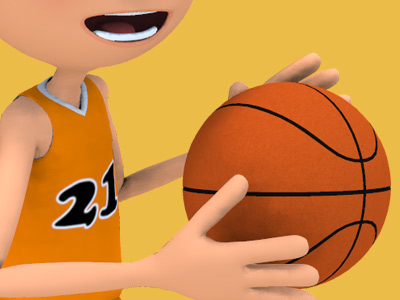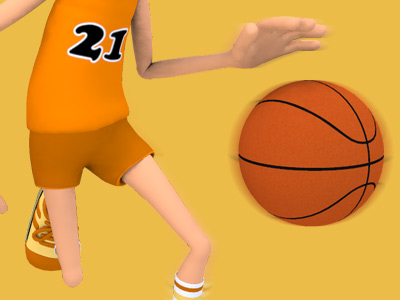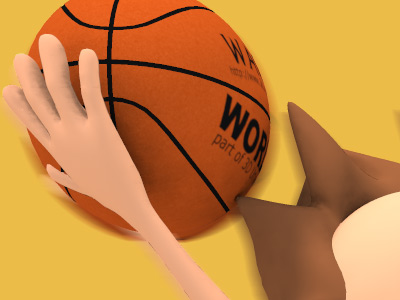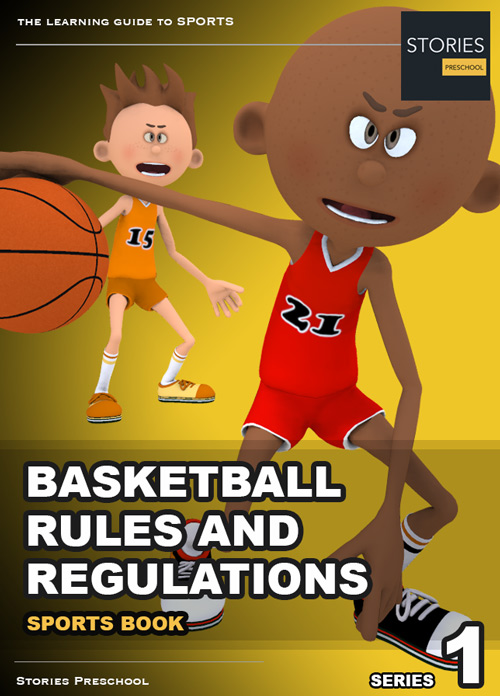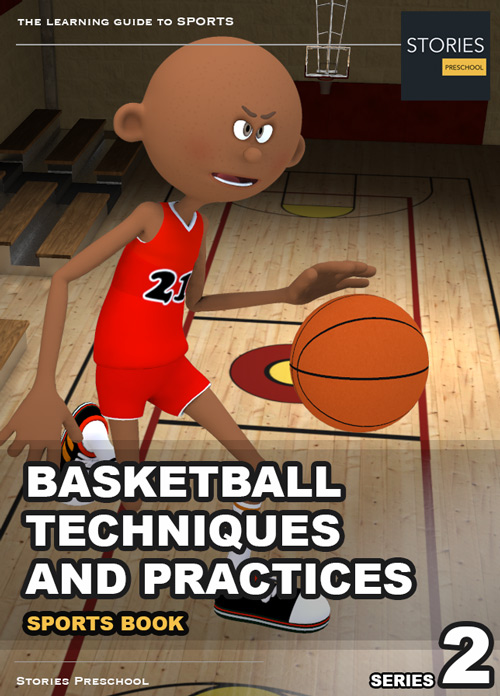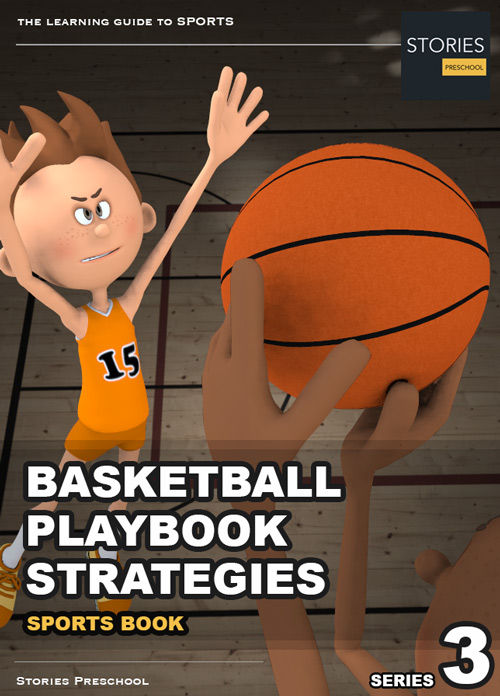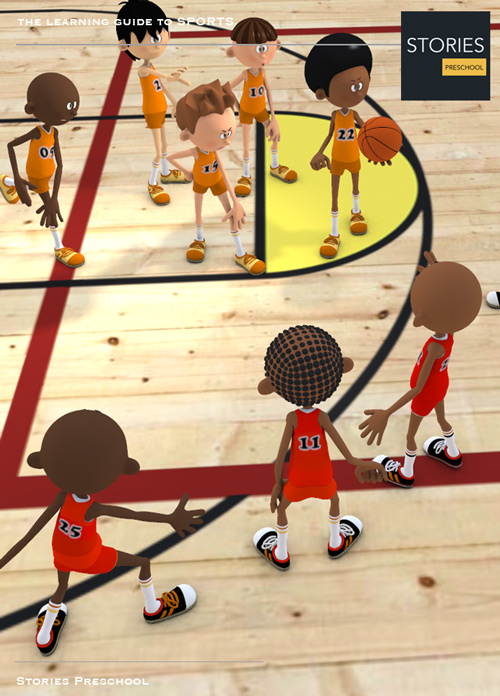Basketball
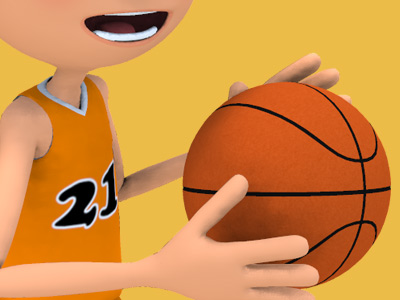
Basketball Playing Regulations
Games are played in four quarters of 10 (FIBA) or 12 minutes (NBA). College men's games use two 20-minute halves, college women's games use 10-minute quarters, and United States high school varsity games use 8 minute quarters. 15 minutes are allowed for a half-time break under FIBA, NBA, and NCAA rules and 10 minutes in United States high schools. Overtime periods are five minutes in length except for high school, which is four minutes in length. Teams exchange baskets for the second half. The time allowed is actual playing time; the clock is stopped while the play is not active. Therefore, games generally take much longer to complete than the allotted game time, typically about two hours.
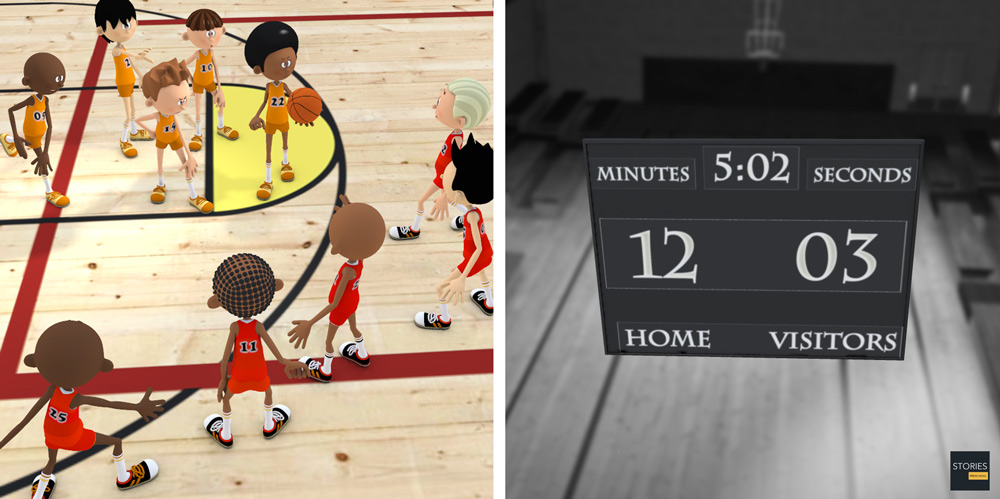
Five players from each team may be on the court at one time. Substitutions are unlimited but can only be done when play is stopped. Teams also have a coach, who oversees the development and strategies of the team, and other team personnel such as assistant coaches, managers, statisticians, doctors and trainers.
For both men's and women's teams, a standard uniform consists of a pair of shorts and a jersey with a clearly visible number, unique within the team, printed on both the front and back. Players wear high-top sneakers that provide extra ankle support. Typically, team names, players' names and, outside of North America, sponsors are printed on the uniforms.
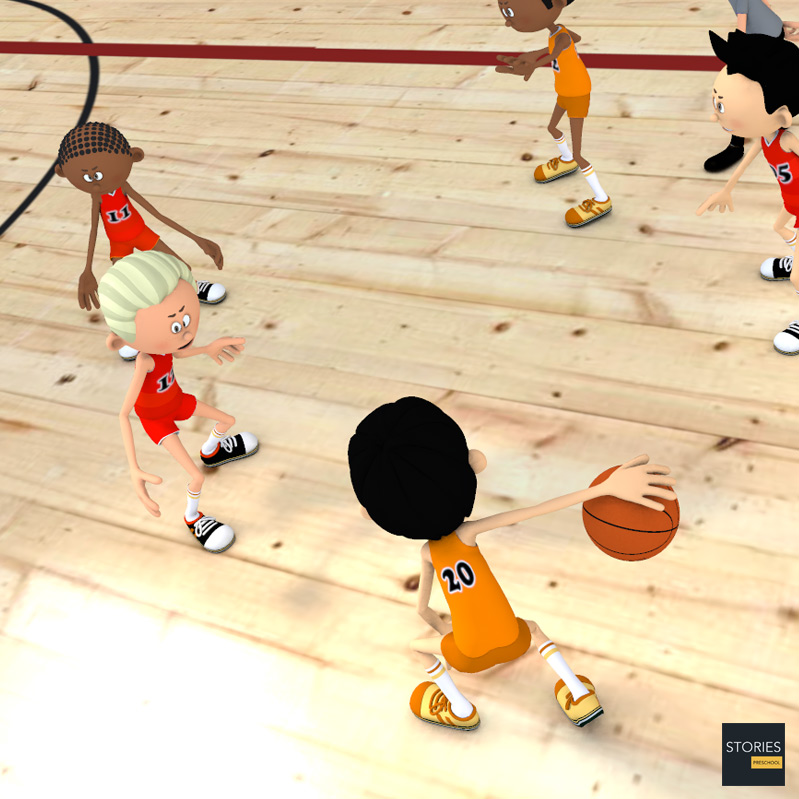
A limited number of time-outs, clock stoppages requested by a coach (or sometimes mandated in the NBA) for a short meeting with the players, are allowed. They generally last no longer than one minute (100 seconds in the NBA) unless, for televised games, a commercial break is needed.
The game is controlled by the officials consisting of the referee (referred to as crew chief in the NBA), one or two umpires (referred to as referees in the NBA) and the table officials. For college, the NBA, and many high schools, there are a total of three referees on the court. The table officials are responsible for keeping track of each teams scoring, timekeeping, individual and team fouls, player substitutions, team possession arrow, and the shot clock.
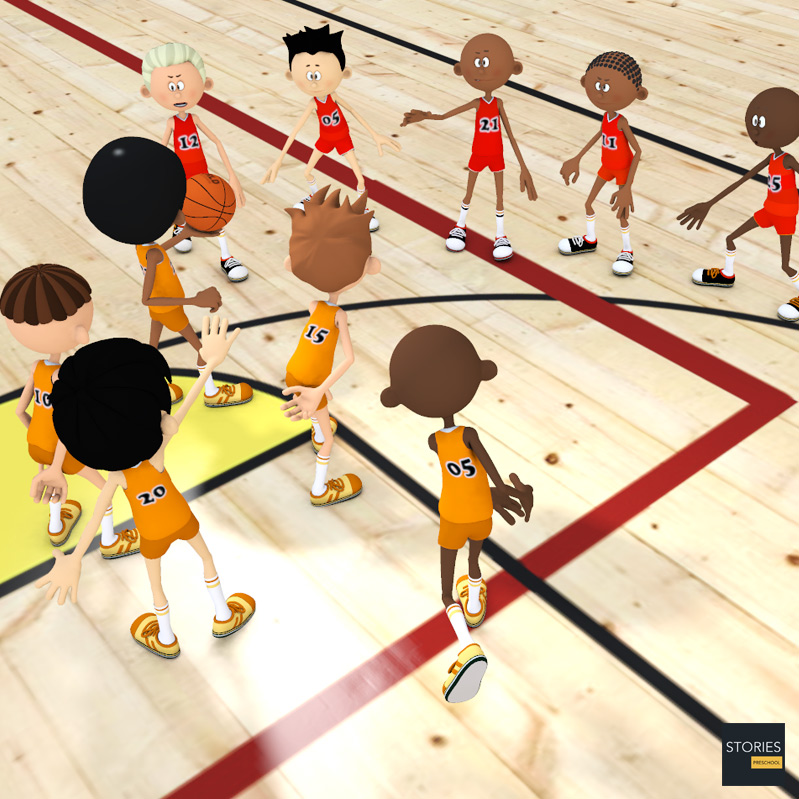
Gameplay
A jump ball is a method used to begin or resume play in basketball. It is similar to a face-off in ice hockey or field lacrosse, or ball-up in Australian rules football. Two opposing players attempt to gain control of the ball after it is tossed up into the air in between them by an official.
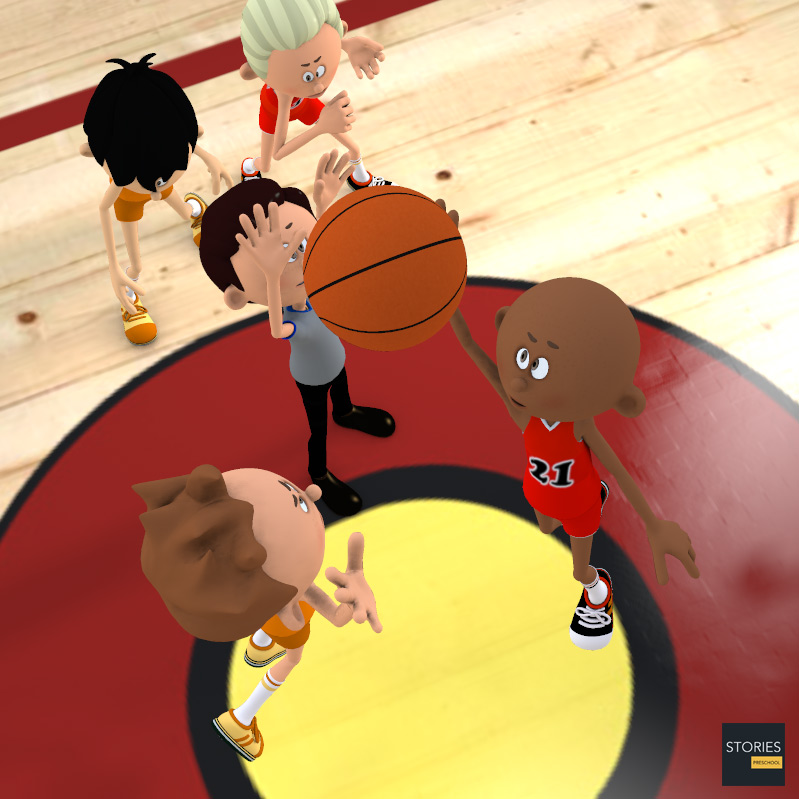
In basketball, a turnover occurs when a team loses possession of the ball to the opposing team before a player takes a shot at his team's basket. This can result from the ball being stolen, the player making mistakes such as stepping out of bounds, illegal screen, a double dribble, having a pass intercepted, throwing the ball out of bounds, three-second violation, a five-second violation, or committing an error such as traveling, a shot clock violation, palming, a backcourt violation, or committing an offensive foul. A technical foul against a team that is in possession of the ball is a blatant example of a turnover, because the opponent is awarded a free throw in addition to possession of the ball.
Common Terminology
- Air ball is a shot that misses both the rim and the backboard. An alley-oop in basketball is an offensive play in which one player throws the ball near the basket to a teammate who jumps, catches the ball in mid air and puts it in the hoop before touching the ground. The alley-oop combines elements of teamwork, pinpoint passing, timing and finishing.
- An assist is attributed to a player who passes the ball to a teammate in a way that leads to a score by field goal, meaning that he or she was "assisting" in the basket. There is some judgment involved in deciding whether a passer should be credited with an assist. An assist can be scored for the passer even if the player who receives the pass makes a basket after dribbling the ball. However, the original definition of an assist did not include such situations, so the comparison of assist statistics across eras is a complex matter.
- A backboard shattering is an accident or stunt in basketball. It occurs when a player slam dunks the ball hard enough to break the 1/2" tempered safety glass of the backboard. The stunt has caused games to be canceled or delayed, serious injuries to occur and expensive costs of cleanup and replacement. Shattering a backboard is extremely dangerous, sending shards of glass flying over the players and fans. In the National Basketball Association (NBA), shattering a backboard during a game is penalized with a technical foul and a possible fine towards the player.
- A ball hog is a derisive term for a basketball player who handles the ball exclusively to the point of impairing the team. Despite not a violation of the rules of basketball, "ball-hogging" is generally considered unacceptable playing behavior at all levels of basketball competition. The term is highly subjective, and any individual player might be considered a ball hog by some observers but not by others.
- A buzzer beater is a shot taken before the game clock of a quarter expires but does not go in the basket until after the clock expires and the buzzer sounds. The term is normally reserved for baskets that beat an end-of-quarter buzzer but are sometimes referred to shots that beat the shot clock buzzer. If a player releases the ball before the buzzer sounds, the shot still counts if it goes in even though the clock expires before the ball goes through the hoop.
- Cherry picking, in basketball and certain other sports, refers to play where one player (the cherry picker) does not play defense with the rest of the team but remains near the opponents' goal.
- A crossover dribble is a basketball maneuver in which a player dribbling the ball switches the ball rapidly from one hand to the other, to make a change in direction. In a typical example the player heads upcourt, dribbling the ball in (say) the left hand, then makes a wide step left with a good head fake. If the defender is deceived, the player can then switch to dribbling with the right hand and surpass the defender. The crossover can allow the player an open short jumper or a clear path to the basket.
- A slam dunk, also dunk or dunk shot, is a type of basketball shot that is performed when a player jumps in the air, controls the ball(s) above the horizontal plane of the rim, and scores by putting the ball directly through the basket with one or both hands. This is considered a normal field goal attempt; if successful it is worth two points.
- The Euro step or Eurostep, is a term for a basketball move in which an offensive player picks up his dribble, takes a step in one direction, and then quickly takes a second step in another direction. It is intended to allow the offensive player to evade a defender and attack the basket.
- A fadeaway or fall-away in basketball is a jump shot taken while jumping backwards, away from the basket. The goal is to create space between the shooter and the defender, making the shot much harder to block.
- Fast break is an offensive strategy in basketball and handball. In a fast break, a team attempts to move the ball up court and into scoring position as quickly as possible, so that the defense is outnumbered and does not have time to set up. There are various styles of the fast break and the fast break attack is the best method of providing action and quick scores. A fast break may result from cherry picking.
- A fly fastbreak (also known as a one out fastbreak) is a basketball move in which after a shot is attempted, the player who is guarding the shooter does not box out or rebound, but runs down the court looking for a pass from a rebounding team mate for a quick score.
- In basketball, a flop is an intentional fall by a player after little or no physical contact by an opposing player in order to draw a personal foul call by an official against the opponent. The move is sometimes called acting, as in "acting as if he was fouled". Because it is inherently designed to deceive the official, flopping is generally considered to be unsportsmanlike. Nonetheless, it is widely practiced and even perfected by many professional players.
- In basketball (and derivatives like netball), a regular jump shot or jumper is an attempt to score a basket by jumping, usually straight up, and in mid-jump, propelling the ball in an arc into the basket. It is accomplished by the player bringing his or her elbow up until it is aligned with the hoop, then sent towards the hoop in a high arc.
- A layup in basketball is a two-point shot attempt made by leaping from below, laying the ball up near the basket, and using one hand to bounce it off the backboard and into the basket. The motion and one-handed reach distinguish it from a jump shot. The layup is considered the most basic shot in basketball.
- The finger roll is a specialized type of basketball layup shot where the ball is rolled off the tips of the player's fingers. The advantage of the finger roll is that the ball can travel high in the air over a defender that might otherwise block a regular jump shot or dunk, while the spin applied by the rolling over the fingers will carry the ball to the basket off the backboard. The shot was pioneered by the center Wilt Chamberlain in the 1960s.
- In basketball, the term field goal refers to a basket scored on any shot or tap other than a free throw, worth two or three points depending on the distance of the attempt from the basket.
- In basketball, a four-point play is the rare occasion when an offensive player shoots and makes a three-point field goal while simultaneously being fouled by a defensive player, resulting in a shooting foul and one free throw attempt, or a two-point field goal and is intentionally or flagrantly fouled on the shot and is awarded two free throws.
- In basketball, free throws or foul shots are unopposed attempts to score points from a restricted area on the court (the free throw line; informally known as the foul line or the charity stripe), and are generally awarded after a foul on the shooter by the opposing team. Each successful free throw is worth one point.
- In basketball, a hook shot is a play in which the offensive player, usually turned perpendicular to the basket, gently throws the ball with a sweeping motion of his arm in an upward arc with a follow-through which ends over his head. Unlike the jump shot, it is shot with only one hand; the other arm is often used to create space between the shooter and the defensive player. The shot is quite difficult to block, but few players have mastered the shot more than a few feet from the basket.
- The pick and roll (also called screen and roll or shortened to screen roll, any of which may be hyphenated) in basketball is an offensive play in which a player sets a screen (pick) for a teammate handling the ball and then slips behind the defender (rolls) to accept a pass. In the NBA, the play came into vogue in the 1990s and has developed into the league's "bread and butter".
- Posterized is North American slang derived from an action in the game of basketball, in which the offensive player "dunks" over a defending player in a play that is spectacular and athletic enough to warrant reproduction in a printed poster. The term was originated from Julius Erving, whose high-flying style of play inspired the term.
- A rebound, colloquially referred to as a board, is a statistic awarded to a player who retrieves the ball after a missed field goal or free throw. Rebounds are also given to a player who tips in a missed shot on his team's offensive end. Rebounds in basketball are a routine part in the game, as all possessions change after a shot is successfully made, or the rebound allows the defensive team to take possession. A rebound can be grabbed by either an offensive player or a defensive player.
- The sixth man in basketball is a player who is not a starter but comes off the bench much more often than other reserves, often being the first player to be substituted in. The sixth man often plays minutes equal to or exceeding some of the starters and posts similar statistics. He is often a player who can play multiple positions, hence his utility in substituting often.
- A screen is a blocking move by an offensive player, by standing beside or behind a defender, to free a teammate to shoot, receive a pass, or drive in to score. In basketball, it is also known as a pick. Screens can be on-ball (when set for the ball-handler), or off-ball (when set for a teammate moving without the ball to get open for a pass). The two offensive players involved in setting the screen are known as the screener (who blocks the defender) and the cutter (who gets free from the defender).
- A back screen is a basketball maneuver involving two players, called a cutter and a screener. The screener remains stationary on the court while the cutter moves toward the basket and attempts to use the screener to separate himself from his defender.
- In the National Basketball Association, shootaround is an informal practice session. While the practice session must be attended by the players, it does not involve all the formal elements of a regular practice. Especially absent will be normally routine conditioning drills; probably absent also will be run-throughs of plays and extensive chalk-talks by the coaches
- A slasher is a basketball player (typically a guard, but also possibly a forward) who primarily drives (slashes) to the basket when on offense. A slasher is a fast and athletic player, who is looking to get close to the basket for a layup, a dunk or to drop in a teardrop shot for a high-percentage two-point play (this style of play is commonly referred to as slashing).
- In basketball, a steal occurs when a defensive player legally causes a turnover by his positive, aggressive action(s).This can be done by deflecting and controlling, or by catching the opponent's pass or dribble of an offensive player. The defender must not touch the offensive player's hands or otherwise a foul is called.
- A tip drill is a basketball exercise in which players take turns to tip the ball off the backboard consecutively without the ball touching the ground. After each rebound the player goes to the back of the queue leaving the next player to repeat the drill. The aim of the drill is to develop timing and jumping ability for rebounding.
- A three-point field goal (also called a three-pointer) is a field goal in a basketball game made from beyond the three-point line, a designated arc surrounding the basket. A successful attempt is worth three points, in contrast to the two points awarded for field goals made within the three-point line and the one point for each made free throw.
- In basketball, a three-point play is usually achieved by scoring a two-point field goal, being fouled in the act of shooting, and scoring one point on the subsequent free throw. Before the three-point field goal was created in the 1960s for professional basketball and 1980's for collegiate basketball, it was the only way to score three points on a single possession. It is sometimes called an old-fashioned three-point play to distinguish from the later three-point shot. And one is also sometimes used to refer to the extra free throw after a two-point basket
- An uncontested shot is a term used in basketball. It encompasses shots from a layup, a slam dunk, and jump shots. It is any kind of shot in which the shooter has no one contesting or interfering with the shot. In competitive leagues, an uncontested shot is one in which a defender is not within five feet of the shooter or one in which a defender is not near enough to alter the offensive player's shot in any way. The primary strategy of most offensive plays is to gain an uncontested shot and defensively to prevent one. In the NBA an uncontested shot is called a bunny or a snowbird.
SPORTS
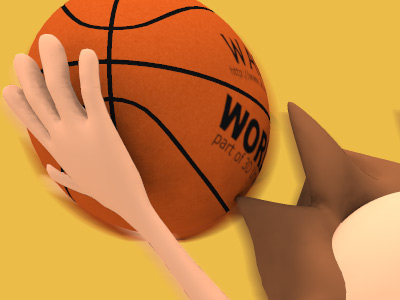
RESOURCES
This article uses material from the Wikipedia articles "Basketball", "Jump ball", "Air ball", "Alley-oop", "Ball hog", "Posterized", "Rebound (basketball)", "Screen", "Shootaround", "Slasher", "Steal (basketball)", "Three-point field goal", "Three-point play", "Tip drill (basketball)", "Uncontested shot", which is released under the Creative Commons Attribution-Share-Alike License 3.0.
© Stories Preschool. All Rights Reserved.
